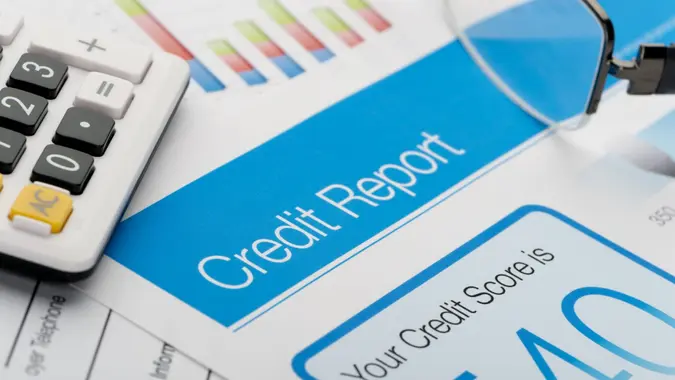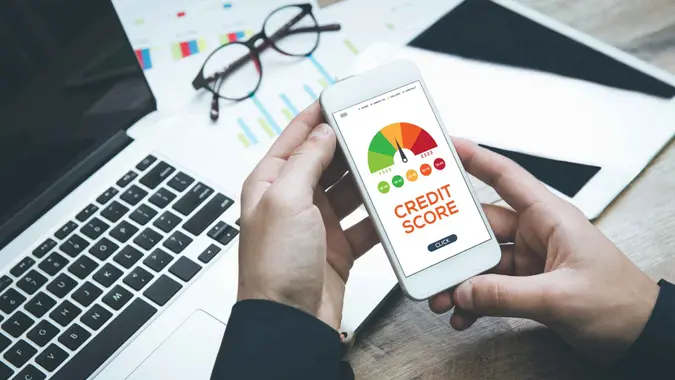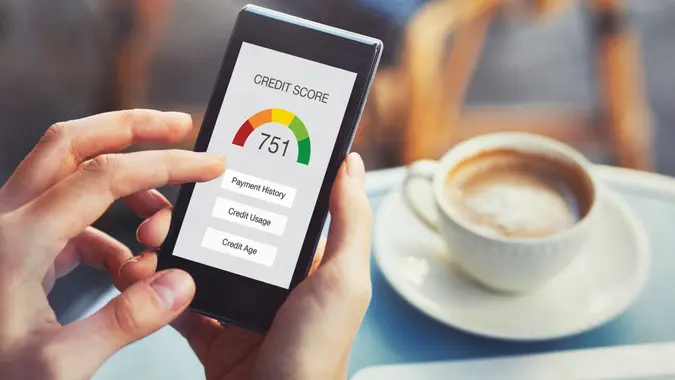Your Bank May Penalize You for Using Buy Now, Pay Later: Here’s What You Need To Know

Commitment to Our Readers
GOBankingRates' editorial team is committed to bringing you unbiased reviews and information. We use data-driven methodologies to evaluate financial products and services - our reviews and ratings are not influenced by advertisers. You can read more about our editorial guidelines and our products and services review methodology.

20 Years
Helping You Live Richer

Reviewed
by Experts

Trusted by
Millions of Readers
We’ve all been in that situation at the electronics or appliance store, or even the grocery store, where you want something but your bank account says “Not today.” But wait, there’s a way to get it — today — with a buy now, pay later (BNPL) loan. Easy payments set up right at checkout. What could possibly go wrong?
Until recently, maybe not a lot. But according to The Wall Street Journal, credit agencies like FICO will begin including these loans for the first time on your credit score. Depending on how often you use BNPL loans and whether you make timely payments could impact your credit and ability to get other, more important loans, such as car loans and mortgages.
GOBankingRates asked two experts what they thought this new tracking could mean for consumers.
How Could Using BNPL Affect Consumers’ Credit Rating?
Like any other type of loan, these could be good or bad for your credit, according to David Morgan, chief lending officer at Lake Trust Credit Union. “Late payments will hurt your score, and stacking multiple BNPL loans can signal financial stress,” he said.
Ultimately, how they’ll affect consumers’ credit rating is complicated and depends on the patterns that emerge.
Is the Growing Use of BNPL Loans a Commentary on the Economy?
Although BNPL loans’ growth rate is slowing, its growth is still on the rise, with BNPL expected to hit $108 billion in 2025, up from $94 billion last year, according to market-research firm eMarketer. By 2028, it’s expected to be at nearly $145 billion.
Some see that as a bad sign for affordability. “BNPL is booming, especially among Gen Z,” Morgan said. “But its rise isn’t just about convenience. It’s also a sign that many people are struggling to afford essentials.”
Should Consumers Stay Away From BNPL Loans?
Joseph Camberato, CEO of National Business Capital, has never been a fan of BNPL loans. He said they make building up too much debt much too easy. “One or two payments feels manageable until you’ve stacked up five or six of them. That’s when people get into trouble,” he said.
He did acknowledge that they do have a use. If you’re in a tight spot and a BNPL loan helps you get by temporarily, it can be helpful. The slippery slope comes when you use them to buy nonessentials you can’t afford.
How Should You View BNPL Loans?
At Lake Trust Credit Union, Morgan encourages his members, especially younger ones, to view BNPL loans like any other loan or credit card. They can be a smart way to manage your purchases, but it’s still debt.
“Misuse can lead to long-term financial challenges,” he said.
If a Consumer Takes Out a Lot of BNPL Loans but Never Misses a Payment, Is That Good for Their Credit?
Here, the answer depends on many factors. Again, it could be a sign that you know how to use credit responsibly. After all, according to both experts, paying off anything on time usually helps your credit.
But with BNPL loans, there’s a twist. Using too many of them, or using them for everyday expenses, could be a signal to lenders that you’re stretching yourself too thin and are not a great credit risk. More importantly, Morgan said, it might be a sign to you to reassess your budget.
Bottom line: Proceed with caution.
 Written by
Written by  Edited by
Edited by 






















